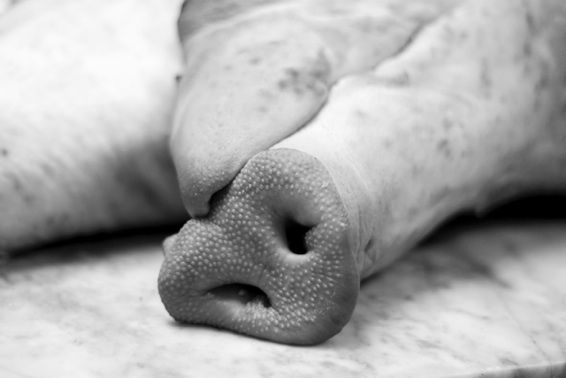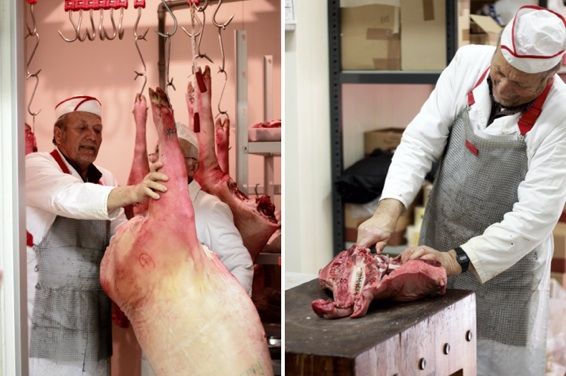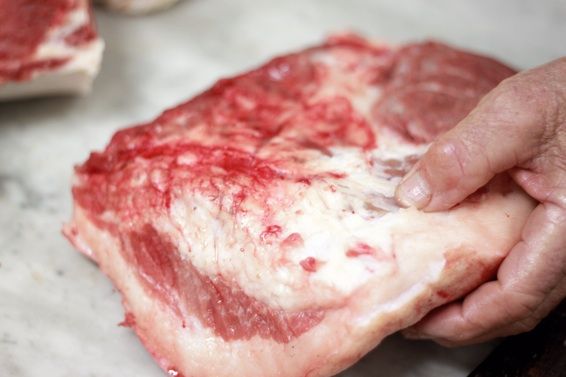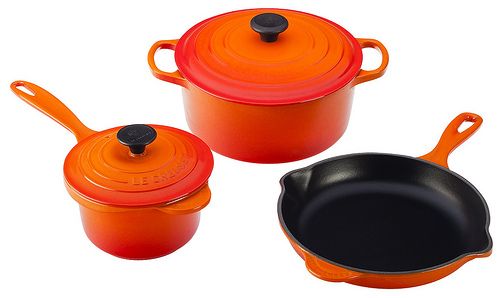Popular on Food52
Continue After Advertisement
15 Comments
Emiko
April 19, 2012
You're right, and that's why Testaccio's trattorie are so well-known for their offal dishes - they've had plenty of practice, as the workers would take their "pay" to get cooked up for them in delicious and hearty dishes! The food in this neighbourhood just blows me away - talk about flavour and knowing what to do with offal to bring out its best side!
pierino
April 20, 2012
Another excellent cookbook, although difficult to find, is "The Food of Rome and Lazio: History, Folklore and Recipes" By Oretta Zanini de Vita. De Vita is to Roman cooking as Marcella Hazan is to the Veneto. American chefs such as Mario Batali make pigrimages to vist her kitchen. The translator is a friend of a friend.
sygyzy
April 19, 2012
I understand the point of the piece but I think the word "ethics" was improperly used in this case.
Emiko
April 19, 2012
For me, eating offal (or considering anything that reasonably lessens food wastage) is certainly a topic that I would consider "ethical" in a number of ways (not only about wasting edible food but also from the viewpoint of honouring the animal) - of course these issues may not be important to everyone and I'm not suggesting that everyone has to think this way, but I do think it's a topic worth questioning and thinking about.
Midge
April 19, 2012
Thank you for another brilliant piece, Emiko. You are so lucky to have a butcher like this! What your mom said about the fish are words to live by for sure.
Evie
April 19, 2012
Hi Emiko
I've just been watching Gennaro Contaldo on "Two Greedy Italians - Still hungry" on BBC2 (new series started tonight) making the chocolate and pig's blood pudding. The programme covered the whole process of killing and using all the parts of the pig. If you can, take a look. It was so good to see the children getting involved. It all seemed so familiar after reading your posts describing it so well.
As ever, I'm full of admiration of your writing.
I've just been watching Gennaro Contaldo on "Two Greedy Italians - Still hungry" on BBC2 (new series started tonight) making the chocolate and pig's blood pudding. The programme covered the whole process of killing and using all the parts of the pig. If you can, take a look. It was so good to see the children getting involved. It all seemed so familiar after reading your posts describing it so well.
As ever, I'm full of admiration of your writing.
arielleclementine
April 19, 2012
this was a really inspiring piece of writing. i especially loved your mom's words about the fish- so beautiful. thanks for sharing!
SpiceRoots
April 19, 2012
Brilliant and well written article. I really found it interesting when I moved to the US 5 years ago that there were no butcher shops. Which meant that if I wanted to cook something with a lamb stomach or liver or kidney, I had to hunt hard. I still have to travel some distance, but I have since found a local butcher.
And Salute to your mom for instilling thankfulness for the bounty we receive from nature.
And Salute to your mom for instilling thankfulness for the bounty we receive from nature.
Burnt O.
April 19, 2012
I can get fresh pig offal (hearts, lungs, liver, pancreas, etc.) from the local Asian market, and have always wondered how best to prepare it. I mean, someone has to be buying their 4 pack of pig hearts - right? I look forward to the rest of your post for ideas, but I may start simply by grinding some up for sausage or ragout.
Emiko
April 19, 2012
If you can get your hands on some old Roman dishes, you'll find plenty of ideas there! Ada Boni's Talisman of Happiness (written in 1927) has a pork heart soup and several pork liver recipes, amongst others. My husband's aunt does one with lungs that i need to get her to show me!
ChompingTheBigApple
April 19, 2012
Though I have become much more aware of where my meat comes from and have tried to open myself up to all parts of the animal, certain offal bits are still intimidating to me when I consider preparing them at home for the first time. This is an inspiration to get out there and be more willing to "cook whole hog" and let go of the fear.
theindolentcook
April 19, 2012
I grew up in Asia, so offal is a part of regular dining experiences. I agree - if an animal has been sacrificed for our benefit, we should at least try not to let any go to waste. Plus, offal can be so delicious, so it makes sense on that level too.
pierino
April 19, 2012
I love this piece. And I'm a long time devotee of the quinto quarto of Rome's Testaccio district where I have dined many times. In the old days the slaughterhouse workers were partially paid with that fifth quarter. I will eat anything but the fur and feathers. I love the morcilla sausage of Spain (boudin noir in France, blood pudding in England) which is made from blood collected quickly from the freshly slaughtered porker. I'm thankful that I now live in a place where a real butcher will provide me with anything I can think of asking for. And he appreciates that I respect his craft.





See what other Food52 readers are saying.